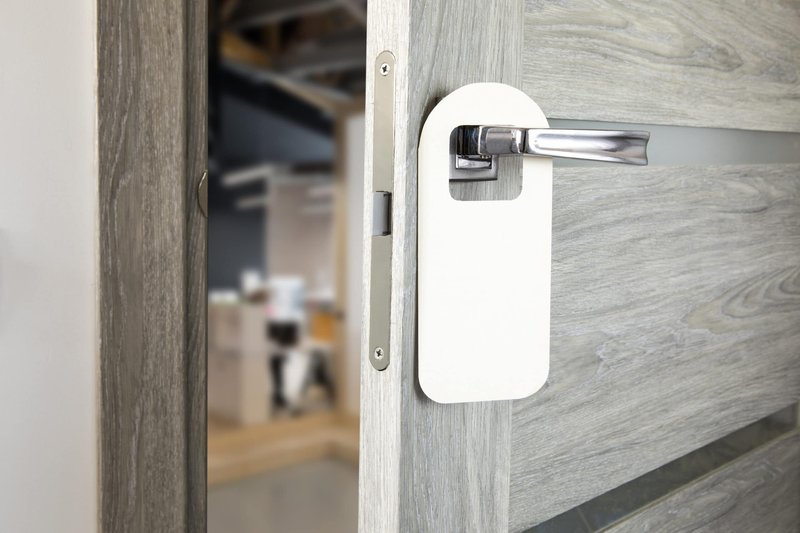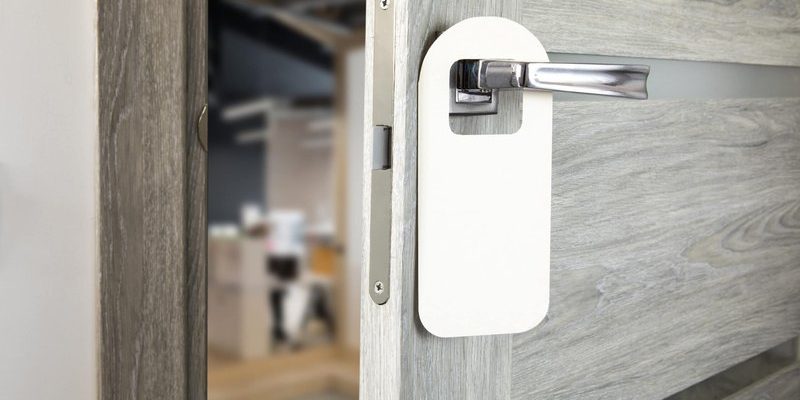
When we think about silencing a door, many of us might jump straight to the hinges or latches, but there’s so much more we can explore. Think of your door like a musical instrument; if one part isn’t in harmony, the whole thing can sound off. In this article, we’ll dive into various methods to quiet your noisy door, ensuring peace reigns in your living space.
Understanding Common Causes of Door Noises
To effectively silence a door, it helps to know why it’s making noise in the first place. Doors can creak, squeak, or thud for several reasons, and identifying the culprit is half the battle.
One common cause of noise is warped wood. Changes in humidity and temperature can cause wooden doors to expand or contract, leading to unwanted sounds as they rub against their frames. Imagine the door acting like a stubborn child who just won’t fit into their favorite shirt anymore.
Another reason might be loose hardware. Over time, screws can loosen, causing parts like knobs and hinges to rattle. Think about it: if you had loose shoelaces, wouldn’t they make a noise every time you took a step? The same principle applies here.
Lastly, some doors might simply be poorly aligned. If a door is out of whack, it may scrape against the frame or threshold. This misalignment can happen for various reasons, including settling of the house or an installation error.
Adding Weatherstripping for Soundproofing
Weatherstripping is a fantastic way to minimize noise from a door. It’s primarily designed to prevent drafts, but it does a great job at muffling sounds as well. Think of it as the cozy blanket you wrap around yourself on a chilly evening—keeping the cold (and noise) out.
To add weatherstripping, follow these steps:
- Pick the right type. Options include adhesive foam tape, V-strip, or door sweeps.
- Measure the edges of your door to ensure you have enough material.
- Clean the surface where you’ll apply the weatherstripping for a strong bond.
- Peel off the backing and carefully stick the strip along the edge of the door, ensuring it’s snug but not overly tight.
Once in place, you’ll notice a significant reduction in noise coming from both inside and outside. Plus, you’ll enjoy the added benefit of better energy efficiency in your home!
Using Door Silence Pads
Door silence pads are another excellent solution. These small, often rubber or felt pads can be placed on the door to absorb sound. They’re like little ninjas for your door, quietly working behind the scenes to dampen noise.
Here’s how to use them:
- Purchase silence pads from a local store or online—they’re inexpensive and come in various sizes.
- Identify the areas where the door makes contact with its frame or floor.
- Stick the pads directly onto those contact points. Make sure they’re securely attached.
Not only do silence pads reduce noise, but they also help protect your door and frame from wear and tear. It’s a win-win situation!
Adjusting the Door Alignment
If your door is making noise because it’s misaligned, adjusting it can solve the problem. This process might sound intimidating, but it’s easier than you think.
Here’s a simple way to realign your door:
- Check if the door is rubbing against the frame. Open and close it to see where the friction occurs.
- Use a screwdriver to tighten any loose screws on the hinge.
- If it’s still off, you can remove the hinge and add a thin washer behind it for adjustment.
- Reattach the hinge and test the door again.
Sometimes, all it takes is a slight tweak to make a significant difference. A properly aligned door not only shuts quietly but also enhances security.
Adding a Soft Close Mechanism
Installing a soft close mechanism is like giving your door a gentle hug every time you shut it. This handy device ensures that your door closes quietly and slowly, minimizing noise and reducing wear on the hinges.
To install a soft close mechanism:
- Purchase a soft close kit compatible with your door.
- Follow the manufacturer’s instructions for installation.
- Most kits will involve attaching a hydraulic mechanism to the hinge.
Once installed, you’ll marvel at how quietly your door now glides into place. No more slamming or loud thuds!
Consider Insulating Your Door
If noise is a significant concern, you might want to go the extra mile and insulate your door. This method not only reduces noise but also improves energy efficiency—so it’s a double benefit!
Here’s how to insulate:
- Choose a door insulation kit that suits your door type (for instance, a pre-hung exterior door).
- Follow the specific instructions on how to apply the insulation—most kits involve placing foam or reflective material along the door.
- Seal any gaps with additional weatherstripping to maximize soundproofing.
A well-insulated door can transform your living space by keeping out unwanted noise and maintaining a consistent temperature.
Final Touches: The Power of Paint
Did you know that the type of paint you use can impact door noise? Heavier paints can add a layer of soundproofing, while lighter paints might not be as effective. If you’re thinking about repainting, consider a thicker, high-quality paint for added weight.
Here’s how to go about it:
- Choose a high-quality paint with some weight to it.
- Sand the door lightly before applying a primer and then the paint.
- Allow each coat to dry fully before adding additional layers.
The right paint can help reduce noise, making your door both aesthetically pleasing and functional.
In conclusion, silencing a noisy door is about more than just adjusting the hinges or latches. By using weatherstripping, silence pads, alignment adjustments, soft close mechanisms, insulation, and thoughtful painting, you can achieve a peaceful, quiet environment.
Every small effort you make contributes to a more serene home—a sanctuary where you can truly relax. So, roll up your sleeves, and let’s get silencing!
